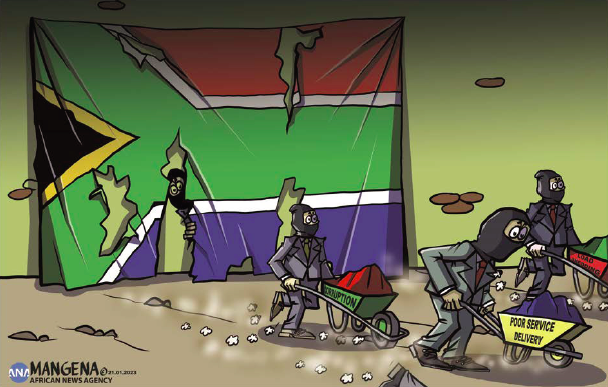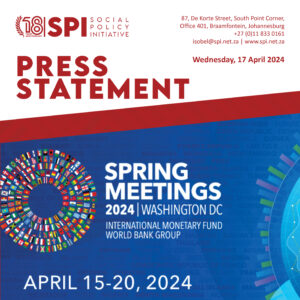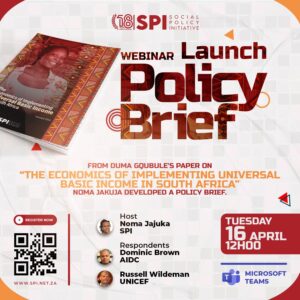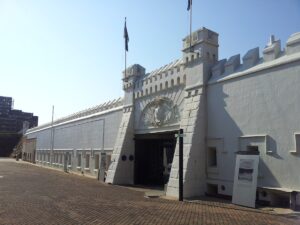
THE past two weeks in South Africa have left millions of people in the dark, literally and figuratively.
As the costs mount, it is concerning that no one who is formally in power seems to have any control.
And amid all the chaos, the inequalities between the rich and the rest are growing.
Recent days have been replete with concerns about the impact of the last quarter’s load shedding on the economy. Rational reasons for the drastic load shedding are not forthcoming from the Cabinet. Stories of poisoning and sabotage are great obfuscations to what must be one of the greatest mismanagements of a public utility.
Retailers have lost trading hours and had to incur diesel costs to keep the power on.
But the crisis turns structural when the production chain is affected. The levels of food and beverage, wood and paper, as well as petroleum and chemical production, which are the backbone of domestic manufacturing, fell in November last year, after more than a quarter’s positive growth.
KFC and other fast food outlets reported having to close their stores, not because of their own load shedding but because chicken suppliers have been affected by the constant load shedding. It is the production disturbance that is threatening the viability of retail.
Agri SA and Grain SA met Agriculture Minister Thoko Didiza on Friday, January 13. They said the situation would affect food production for at least the next two years, with sky-high food prices an inevitable outcome.
Global research has put expenditure by the poor on foods at roughly 60% of monthly spending.
Social justice watchdog, the Pieter-maritzburg Economic Justice and Dignity Group, monitor the impact of food pricing and household costs in poor households against available income levels such as the National Minimum Wage and social grants. (Their research should be a lodestar for policy-makers).
Food prices rose dramatically last year, with the war in Ukraine a major disruptor on global food production. Due to South Africa’s global exposure, that impact was felt even in the poorest households. What stood out in its year-on-year price analysis was that while the 12-month inflation for food subject to VAT was 10.2 % to December last year, the price inflation for zero-rated foods, in other words, the foodstuffs deemed essential, was even higher, at 16.7%.
And last week, the National Energy
Regulator of South Africa approved an increase of 18.65% in electricity prices. This is well short of the 32% Eskom demanded, but it is going to affect households.
According to Statistics SA’s most recent General Household Survey, the use of electricity as the main source of energy for cooking had risen from 58% in 2002 to 79% in 2020. Electrification brought safety and cleaner energy but it has also now built in a dependency on electricity that in the absence of the vision of solar panels on every roof that the president shared as a solution last year, means that the financial squeeze on households of an electricity price increase will be vicious.
In recent decades, there have been unaffordable increases in the costs of food and living, rather than ideology, that have caused the overthrow of governments.
The UK continues to be gripped by strikes as public sector workers demand inflation-matching pay increases. The government said that it couldn’t afford to pay inflation-related increases, which means that the fabric of Britain – the teachers, nurses, postal workers, train drivers and police force – will be facing a future in which they will see year-on-year shrinkage of their lifestyles. It seems to be a deadlock, which many predict will lead to a change of the rocky government.
In the UK, workers have power in strike action. Last quarter’s unemployment rate in the UK was 3.7%. In South Africa, the unemployment rate is 43.1%. (The rate is 47.6% for black South Africans and 9.5% for white South Africans.) What this means is that the poor have no bargaining power because they are unemployed, outside the labour market, or they are the working poor – precarious workers who know that any labour dispute will see them thrown back into the reservoir of unemployed labour.
The only real income that the poor in South Africa have is a social grant income. Grants are means-tested so, in effect, they are received by workerless households. Most grants fall well short of the Food Poverty Line of R663 per person per month. The Child Support Grant received by almost 13 million children is R480 a month, or just 72% of the Food Poverty Line. The R350 grant is 53% of the Food Poverty Line. Grants are the income source that feeds more than half (52.4%) of all households in South Africa including the R350 Social Relief of Distress Grant.
The new values of grants will be announced in the February 2023 Budget. How do the poor negotiate for inflation-related increases, with an eye on the electricity tariff increase, when the minister of finance has declared that grants would have below-inflation increases to keep the Social Relief of Distress Grant on the books? What sources of power do the poor have in their demands for dignity?
Load shedding and electricity price increases are shaking the foundations of the nation. The struggling middle class, which is meant to be the motive force for economic growth, will be decimated by the power crisis. Food production is under threat, and rates of starvation for grant recipients and those unable to get grants will rise. The economy will shrink even further.
Where does the power lie to intervene? Minister Didiza ended her meeting with the food production leadership by saying that she had no control over Eskom, but she would be sure to make a strong case with the Cabinet for managing the effect of load shedding on farmers, according to Agri SA.
This country has never been at a more precarious point. When will the government wake up?


